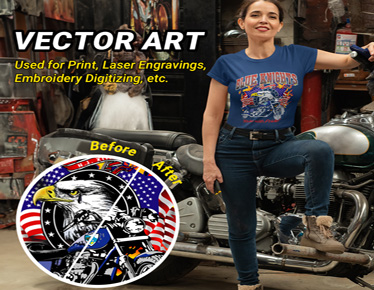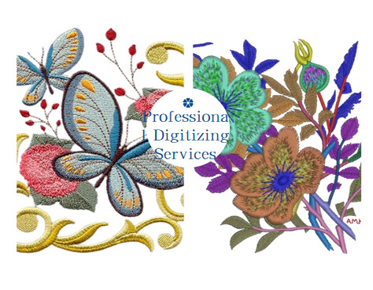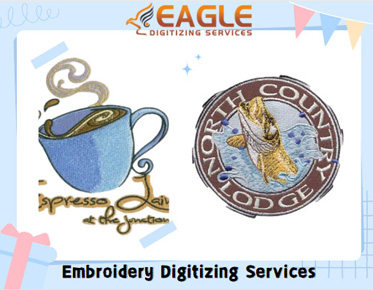The Ultimate Guide: Converting Raster Images to Vectors in Illustrator
Raster images and vectors are two fundamental
types of digital graphics, each with its unique attributes and applications.
While raster images consist of pixels and are best suited for photographs and
detailed images, vectors are composed of mathematical equations and are ideal
for scalable graphics like logos and illustrations. In this guide, we'll
explore the process of converting raster images tovectors in Adobe Illustrator, a powerful tool for graphic design
professionals. Understanding this process is crucial for creating versatile and
high-quality artwork that can be scaled infinitely without losing clarity or
sharpness.
● The Need for
Converting Raster Images to Vectors
● Introduction to
Adobe Illustrator
● Methods of
Converting Raster Images to Vectors
● Step-by-Step
Guide: Converting Raster Images to Vectors in Illustrator
● Tips and Tricks
for Successful Conversion
● Common Challenges
and Solutions
● Advanced
Techniques for Vectorization
● Real-World
Applications of Vector Graphics
Definition
of raster images
Raster images, also known as bitmap images, are made up of a grid of pixels, where each pixel contains specific color information. This grid determines the overall resolution and detail of the image.
Common
file formats for raster images
Common file formats for raster images include JPEG, PNG, and TIFF. These formats are widely used for photographs and images with complex color gradients.
Characteristics
of raster images
Raster images are resolution-dependent, meaning they can lose quality when resized or scaled up. Additionally, raster images are suitable for capturing intricate details and textures but may become pixelated when enlarged.
Definition
of vector graphics
Vector graphics are composed of mathematical equations and geometric shapes, allowing for infinite scalability without loss of quality. This makes them ideal for logos, icons, and illustrations.
Advantages
of vector graphics over raster images
Vector graphics offer several advantages over raster images, including scalability, editability, and smaller file sizes. They are perfect for designs that require precision and can be easily modified without losing quality.
Common
file formats for vector graphics
Common file formats for vector graphics include AI, EPS, and SVG. These formats preserve the mathematical properties of vector artwork convertion and are compatible with various design software.
Limitations
of raster images
Raster images have limitations in terms of scalability and editability. They are not suitable for designs that require resizing or extensive modifications.
Benefits
of converting raster images to vectors
Converting raster images tovectors allows for greater flexibility and control over the final artwork. It enables designers to resize images without loss of quality and make precise edits to individual elements.
Overview
of Adobe Illustrator software
Adobe Illustrator is a vector graphics editor developed by Adobe Inc. It is widely used by designers and artists to create and edit vector-based artwork.
Features
and tools for vector creation and editing
Illustrator offers a wide range of features and tools for vector creation and editing, including the Pen tool, Shape tools, and Pathfinder panel. These tools allow users to create complex shapes and manipulate vector objects with ease.
Image
Trace tool in Adobe Illustrator
The Image Trace tool in Illustrator allows users to automatically convert raster images to vectors. It analyzes the colors and shapes in the image and generates a vectorized version based on predefined settings.
Manual
tracing techniques
For more control over the conversion process, designers can use manual tracing techniques. This involves using the Pen tool or Shape tools to trace the outline of the raster image and create a vectorized version.
Online
conversion tools and software
There are also many online conversion tools and software available that can convert raster images to vectors. While these tools may not always produce the same level of quality as manual tracing, they can be a quick and convenient option for simple images.
Importing
the raster image
Start by importing the raster image into Illustrator using the File > Place command. This will embed the image into your Illustrator document.
Choosing
the appropriate tracing method
Next, choose the appropriate tracing method from the Image Trace panel based on the complexity of the image. You can choose from preset options or customize the tracing settings to achieve the desired result.
Adjusting
tracing settings
Adjust the tracing settings to fine-tune the conversion process and achieve the desired level of detail. This may involve adjusting parameters such as threshold, noise, and corner angle to optimize the tracing result.
Refining
and editing the vector image
Once the image has been traced, refine and edit the vector artwork as needed using Illustrator's editing tools. This may include cleaning up stray anchor points, adjusting curves, and adding or removing elements.
Choosing
the right tracing settings
Experiment with different tracing settings to find the optimal balance between detail and simplicity. Keep in mind that higher fidelity settings may result in larger file sizes and longer processing times.
Cleaning
up the vector artwork
After tracing, clean up the vector artwork by removing unnecessary paths and adjusting anchor points. This will help streamline the artwork and improve its overall appearance.
Using
layers effectively
Organize your artwork into layers to make editing and manipulation easier. This will allow you to isolate specific elements and make changes without affecting the rest of the artwork.
Dealing
with complex images
For complex images, consider breaking them down into simpler components before tracing. This will make the tracing process more manageable and result in cleaner vector artwork.
Addressing
color issues
If colors are not accurately represented after tracing, adjust the color settings in Illustrator to achieve the desired result. This may involve adjusting color balance, saturation, and hue to match the original image.
Handling
intricate details
For images with intricate details, use the Pen tool or Shape tools to manually trace the most important elements. This will ensure that fine details are preserved in the vectorized version of the image.
Using
advanced tracing options
Explore advanced tracing options in Illustrator, such as color reduction and noise reduction, for more precise results. These options allow you to fine-tune the tracing process and achieve optimal results for different types of images.
Incorporating
gradients and effects
Experiment with gradients, textures, and effects to add depth and dimension to your vector artwork. Illustrator offers a wide range of tools for creating realistic effects and enhancing the visual appeal of your designs.
Applying
custom brushes and patterns
Use custom brushes and patterns to add unique textures and patterns to your vector designs. This will help create visually interesting and dynamic artwork that stands out from the crowd.
Logo
design and branding
Vector graphics are ideal for logo design and branding due to their scalability and versatility. They allow designers to create professional-looking logos that can be used across various marketing materials and platforms.
Illustrations
and digital art
Illustrators and digital artists often use vector graphics for creating illustrations, digital paintings, and other forms of artwork. The scalability and editability of vector graphics make them ideal for creating detailed and intricate designs.
Printing
and signage
Vector graphics are commonly used for printing and signage due to their crispness and clarity at any size. Whether it's a small business card or a large billboard, vector graphics ensure that your designs look sharp and professional.
Converting raster images to vectors in
Illustrator opens up a world of possibilities for designers and artists. By
understanding the process and techniques involved, you can create high-quality
artwork that is scalable, editable, and visually stunning. Whether you're a
beginner or an experienced designer, mastering the art of vectorization will enhance your creative abilities and allow you to
create artwork that truly stands out. With the knowledge and skills gained from
this ultimate guide, you'll be well-equipped to tackle any vectorization
project with confidence and precision.



